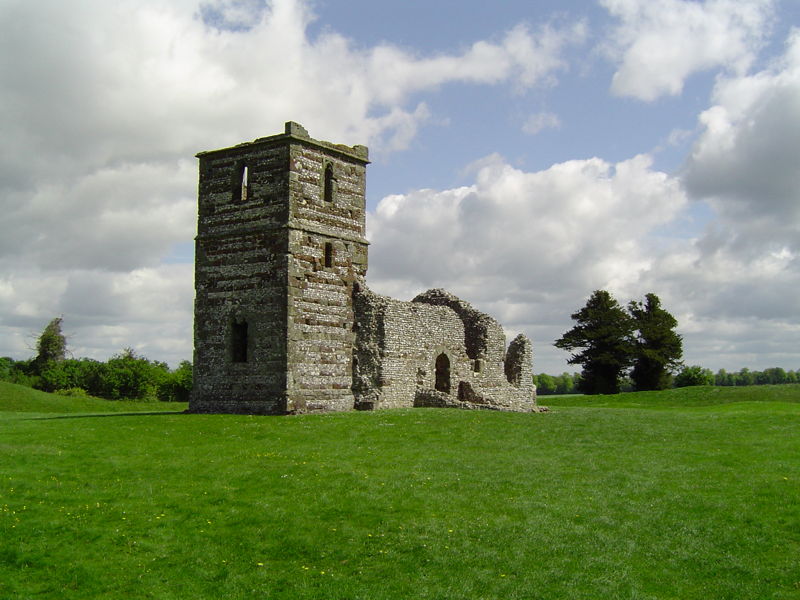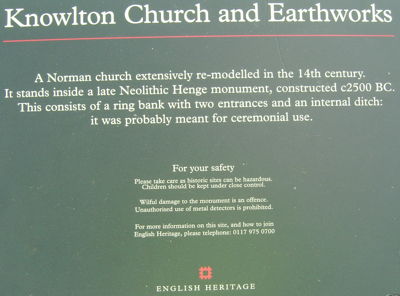
Knowlton Church by Ron Trill
The remains of Knowlton Church are just off the B3078, about 3 miles south-west of Cranborne. Situated within a henge. or prehistoric circle, these ruins are well-known to local cyclists and provide a useful picnic spot, with wide views to the west.
Actually there are three circles and the church was built in the central one. The modern B3078 runs through the middle of the larger southernmost circle and there are a number of tumuli scattered around the area, so this could have been a populous place in Neolithic or Bronze Age times.

For many years now the Church and open area within the circle has been kept tidy, but it was not always so. In the late 1940s the Church was in a greater state of ruin than it is today. A rowan tree was growing out of the tower, and the surrounding scrub was threatening to overwhelm it, but then some forty or so years ago it became popular with archaeologists, and then the local press and in the natural progression of things the site was cleared and restored as far as possible and made available to visitors. Not that there is much to see, really. The interest lies in the fact that a church had been built in Norman times in a prehistoric circle, which at that time would, as like as not, have been regarded as the work of the Devil, and avoided like the plague; an appropriate word.
On the face of it, this seems to be a strange place for a church to be. There are several villages within a mile or so, in a valley with water near and each with a church, so why a church on this deserted spur of Knowle Hill? Saxon settlements were almost always near water.
Well, actually, there was a village of Knowlton, which disappeared a very long time ago. Take the road leading north west from the B3078 past the church and drop down to the river Allen. The village site is in the field on the right immediately before the stream. It was discovered from the air many years ago, as were hundreds of other sites of vanished villages across the country. There is, or was, an organisation specially formed to discover such sites and so far more than 70 have been found in Dorset alone.
From what records are available, it seems that all these villages were there and thriving at the beginning of the late 14th century but had vanished within a hundred years. Various theories have been advanced to account for their disappearance, but few carry much weight beside the fact of the Black Death of 1348 which crept into the country through the small port of Melcombe Regis, near Weymouth, and remained in the country for more than 300 years, culminating in the Great Plague of London in 1665.
Knowlton does not seem to have survived the plague but its name is preserved as nearby Horton now within the parish of Knowlton.

Click here to go back to Salisbury Section Home Page
StatCounter.com counter: